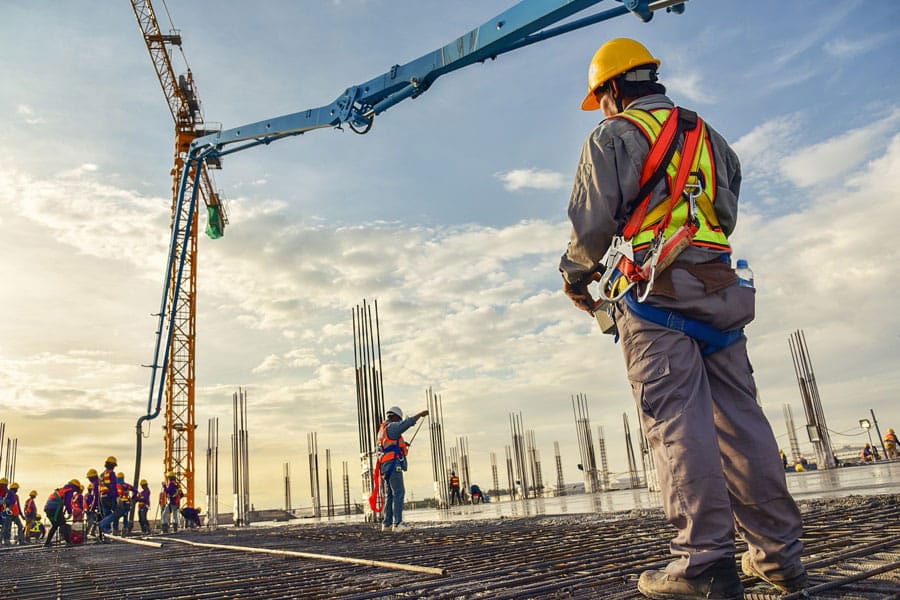It’s often said that the British like to obsess about the weather. Recently they have had another pressing topic to mull: the cost of living. More accurately, the cost of living crisis.
Why “crisis?” Well, prices for a range of goods are rocketing, driven in part by the steep increase in the cost of energy. Incomes, relative to prices, are falling behind as inflation rises. Interest rates are at highs not seen for years in an effort to bring down soaring inflation. Meanwhile, the UK appears to be heading for a recession, which some fear could last a year.
Why is this happening? What does the current climate mean for the economy and business, and specifically for construction?
Why is the cost of living rising?
The cost of living has risen sharply since the end of 2021 for a number of reasons. That it has become a crisis is largely due to several factors making their presence felt all at once.
The impact of COVID-19 shouldn’t be underestimated. Pandemic restrictions dramatically slowed economic activity, a situation from which the UK has still to properly recover.
There’s rising inflation, which along with a downturn in consumer confidence is eroding people’s spending power, with the cost of pretty much everything increasing faster than earnings. Inflation was already climbing before Russia’s invasion of Ukraine in February 2022 led to a breakdown in the supply of gas to several European countries, including the UK. Now domestic households and businesses alike face soaring energy prices for the foreseeable future.
The UK has also been affected by a series of post-Brexit scenarios, where trade has been hit, particularly exports to the EU. Additionally, many businesses report permanently losing EU-citizen staff who went home as COVID-19 tightened its grip on the UK and haven’t returned.
Then there was the hike in interest rates last year, following the then-Chancellor of the Exchequer Kwasi Kwarteng’s now-infamous “mini budget,” which rocked the financial markets and sent the cost of borrowing for businesses and mortgage holders skyrocketing.
What does this mean for the cost of construction?
Of course, the UK and other countries have faced economic crises before. Cyclical recessions have periodically rocked the UK, prompted by events such as the Middle East oil crisis in the mid-1970s and the global financial crash of 2008-09.
However, the multifaceted nature of the current situation means there is little respite to be had, at least for the foreseeable future. Some, like the British Chamber of Commerce, don’t expect any semblance of growth to return until the last three months of 2023 at the earliest.
Inevitably, this has had an impact on the construction industry, which has seen business slow and the cost of building materials and energy go up.
According to the latest S&P Global/CIPS UK Construction Purchasing Manager’s Index report, the UK’s construction sector recorded a fall in business activity during December 2022, ending a three-month sequence of moderate growth. Worryingly, the rate of decline was the fastest since May 2020.
The S&P report added that the December data highlighted a reduction in new orders placed with UK constructors, despite a “modest” uplift in November 2022. “According to survey respondents, the fall was driven by weak client demand, linked in turn to higher prices charged,” it said.
This is resulting in what some in construction dub as a “cost of building crisis.” Supply chains have been tightening for some time, and while certain materials can be sourced relatively easily, albeit more expensively, others—such as steel and timber—are getting harder to come by. The situation in Eastern Europe has added to such pressures.
Construction cost inflation is likely to get worse before it gets better. According to the Construction Leadership Council (CLC), rising energy and wage costs are expected to push prices upwards in the coming months: “Manufacturers of energy-intensive products (such as bricks, cement, glass, insulation and plasterboard) warn that although many have been able to hedge energy costs through Q1 of 2023, energy prices in Q2 and Q3 are expected to be considerably above historical (pre-Ukraine war) levels without further government support.”
Amid the cost-of-living crisis, the construction sector has also been affected by the loss of workers, particularly those from the EU who left the UK during the pandemic and declined to return. Firms have reported struggling with recruitment drives among UK nationals.
The reduced construction activity in December was most marked across the residential and civil engineering sectors.
Leading housebuilders including Taylor Wimpey and Persimmon have warned they won’t be ramping up the delivery of new homes this year, pointing to an increasingly tough market—fuelled by a slide in consumer confidence—whose features include lower sales and rising cancellation rates.
How can construction firms weather the cost-of-living crisis?
So, what can construction firms do to navigate the impact of inflation and the cost-of-living crisis? Keeping a close eye on costs is an obvious example—although there is only so much firms can do to mitigate some increases.
As the CLC has said, the sector, like others, will be seeking further backing from government, particularly around energy. However, ministers have already indicated that existing support will be scaled back from March 2022, a move described by the Federation of Small Businesses as “bitterly disappointing.”
Strengthening the relationship with one’s supply chain and key customers is another important approach, although one would expect this already to be in place.
Looking beyond one’s normal route to market is another option, according to experts. Noble Francis, economics director at the Construction Products Association, said firms should look at where the opportunities are.
“Don’t just stay in your usual sector and chase work, bidding low,” he said. “That just exacerbates the situation, especially with high and uncertain cost inflation.”
Offering extra support to staff where possible is another consideration. While housebuilders are responding to falling demand by reducing output, many firms, notably Barratt, are giving employees special cost-of-living payments to help them through the tough times.
Meanwhile, using digital technology to get the most out of a team’s efforts will also increase opportunities for efficiency gains.
Sharing information through digital collaboration across a range of stakeholders and being able to make changes quickly will speed up processes, improve accuracy and help deliver better quality outcomes.
The difficult conditions we’re seeing will be with us for several months, with the cost-of-living crisis perhaps even stretching into 2024. But this uncertainty won’t last forever. The construction industry is resilient, and while there may be cutbacks and corporate casualties along the way, the sector will bounce back, as it always does.















